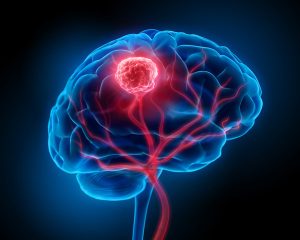Virtually every cell in the human body has an internal clock. These clocks are controlled by a central clock in the brain. In a normal, biological process called synchrony, the central clock coordinates the daily rhythms in the body so that each cell and tissue recognizes the same external time of day. Knowing the local time helps our bodies regulate essential processes, such as when to sleep and be awake, when to eat and what temperature to maintain, as well as many other important functions.
But a deadly invader keeps time the same way. Glioblastoma is an aggressive, incurable brain tumor that is the most common malignant brain tumor in adults. New research from Washington University in St. Louis shows that glioblastoma has an internal clock and synchronizes its daily rhythm with that of its host – and takes advantage of its rhythm. In this way, brain tumors grow in response to the host’s daily release of steroid hormones like cortisol.
How Glioblastoma Tumors Respond to a Drug
The WashU scientists discovered that blocking circadian signals dramatically slows glioblastoma growth and disease progression. This process worked in both cells in a culture dish and in tumor-bearing animals, as shown in a study published in Cancer Cell. “Glioblastoma is controlled by hormones secreted by the same central clock in the host that sets the body’s regular circadian rhythms,” said Erik D. Herzog, PhD, Viktor Hamburger Distinguished Professor and Professor of Biology in Arts & Sciences, senior author of the study. “By blocking the daily increase in glucocorticoid signaling, the glioblastoma’s circadian rhythms are decoupled from those of the host, and disease progression is dramatically slowed in tumor-bearing mice.“”Our previous research helped us see a pattern,” said Maria F. Gonzalez-Aponte, PhD, first author of the study. “Whether we were looking at clinical data, patient-derived cells, or mice with glioblastoma model tumors, the chemotherapy always worked best around normal waking hours. This led us to the idea that these tumors knew the time of day outside.”

For many years, the use of DEX in glioblastoma has been controversial, with studies showing either growth-promoting or growth-inhibiting effects,” Gonzalez-Aponte said. Knowing that glioblastoma has a daily rhythm, the researchers immediately wondered if the time of day of DEX administration could explain these different results, and it appears that it does.
Setting the clock
Every day, just before a person or animal wakes up – in response to light and other environmental cues – the brain sends a signal to the adrenal glands to release a surge of steroid hormones called glucocorticoids. These hormones are involved in the well-known fight-or-flight response. But they also regulate a host of more important biological processes, including metabolism and immune defense. Under normal conditions, glucocorticoid levels rise dramatically every day before we wake up,” Gonzalez-Aponte said. She and Herzog hypothesized that the glioblastoma responds to this reliable daily glucocorticoid explosion to synchronize its clock with that of its host.
To test this idea, Gonzalez-Aponte first wanted to see if she could disrupt a tumor’s sense of time by resetting its host’s circadian rhythm. She placed tumor-bearing mice in cages that could be made light or dark using a timer. By turning on the lights at different times, Gonzalez-Aponte tricked the mice into adopting a reverse schedule. She could tell it was working by watching when the mice started running in their wheels each day.
As the mice adjusted to their new, reversed schedules, the scientists monitored the cancer cells in the tumors in their brains for changes. They used a novel method to map the expression of clock genes in cancer cells in the freely moving mice – collecting data every minute for several days. The scientists observed that two clock genes in the cancer cells, Bmal1 and Per2, changed their schedules when the mice changed their schedules. They found that Bmal1 and Per2 do the same as the mouse in the wheel. That is, the cancer cells resynchronize their daily rhythms when the mouse resynchronizes its locomotor activity. Similarly, when the mice woke and slept according to their own circadian cycles without any environmental temporal cues, the tumors remained synchronized to the host.
What This Means for Treatment
Glucocorticoids are just one of the circadian cues that have been shown to synchronize clocks in cells in the body. However, glucocorticoids are important in the context of cancer treatment because synthetic versions of these steroid hormones are sometimes used in high doses to treat symptoms that arise in cancer patients after surgery and treatment. DEX is one of these synthetic glucocorticoids. It is often given in addition to chemotherapy, and can be given to glioblastoma patients to reduce brain edema that occurs after surgery and radiation. Despite its widespread use, doctors and scientists continue to report mixed results with DEX. Some studies have shown that DEX has tumor-suppressing effects, while others have shown that DEX promotes the proliferation of glioblastoma cells. Gonzalez-Aponte and Herzog hypothesized that if glioblastoma has its own reliable circadian rhythms, then its response to DEX – a synthetic glucocorticoid hormone – might vary depending on the time of day that DEX was administered.
They designed a series of additional experiments that showed that glucocorticoids promote or suppress glioblastoma cell growth depending on the time of day. In mice with glioblastoma brain tumors, the researchers found that tumor size increased significantly when DEX was administered in the morning compared to evening or control applications. These findings in mice have implications for the use of glucocorticoids like DEX in the clinic. Further research is needed to determine if there are times of day when DEX can be used to reduce brain edema without promoting the growth of glioblastomas. The researchers used data from a publicly available cancer database and found that glioblastoma patients tend to live 60% longer if their tumor expresses less glucocorticoid receptor. This encourages them to conduct clinical trials aimed at avoiding morning DEX treatments.







